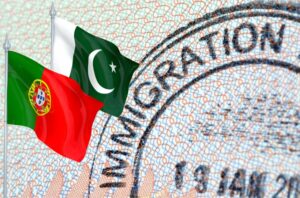Are you intrigued by the world of dual citizenship? Wondering if you can obtain more that one citizenship? Securing dual nationality can be your gateway to new opportunities worldwide – from flexible travel options to expanded economic possibilities. But it’s important to know that not all countries allow this special status. In this enlightening article, “Countries That Allow Dual Citizenship in 2023,” we will guide you through the complexities of dual citizenship, highlighting its origins, pros, cons, and how you can acquire it.
We’ll also provide an updated list of countries that welcome dual citizens, helping you make an informed decision about your future. So, if living a life with an extra layer of international freedom piques your interest, keep reading for a comprehensive look at dual citizenship.
Introduction to Dual Citizenship
Definition of Dual Citizenship
Dual citizenship, also known as dual nationality, is when you’re simultaneously recognized as a citizen of two different countries. Only some countries are on board with this, as the rules and regulations about dual citizenship can vary. For example, countries like Mexico, Canada, and the United Kingdom are okay with dual citizenship, while others, such as China and India, aren’t.
In the United States, you’re allowed to have dual citizenship by default. This means that US citizens don’t have to give up their original citizenship when they become US citizens. But remember, dual citizenship isn’t just about the benefits. As a dual citizen, you’ll enjoy the perks of both countries, like the ability to work and travel freely, vote in elections, and access public benefits. But you might also have to fulfill certain obligations, like paying taxes in both countries and potentially serving in the military, depending on the countries’ laws.
Getting dual citizenship can be tricky and varies depending on the countries involved and their specific laws and requirements. It’s a good idea to check with the embassy or consulate of your country of origin to get the lowdown on their rules and regulations about dual citizenship.
The Origins of Dual Citizenship
Dual citizenship has a long history from the 19th century, with laws and policies changing over time. The United Kingdom was one of the first countries to allow dual citizenship in 1948, followed by France in 1973, Canada in 1976, and the United States in 1990.
The acceptance of dual citizenship has happened at a different pace everywhere. It’s been more quickly accepted in the Americas and Oceania, while it’s been slower in Africa and Asia.
Today, over 70% of countries worldwide are okay with dual citizenship and let their citizens voluntarily become citizens of another country without automatically losing their original citizenship.
Take the United Kingdom, for example. Its history of dual citizenship includes introducing the option to give up British subject status in 1870, removing restrictions on dual nationality in 1948, and changing laws about the status of wives and children. The decision to let British nationality be kept was seen as more practical and less of a hassle, leading to the removal of restrictions on dual nationality in 1948.
Dual citizenship is a complex and ever-changing topic. It opens up a world of opportunities and benefits. Still, it’s essential to know the rules and regulations of both countries involved to stay on the right side of the law and avoid any potential conflicts.

Countries that Allow Dual Citizenship
The status of holding two passports and citizenship certificates from two different nations is permitted by many countries globally. Sixty-four countries accept this status, primarily in Europe, North America, and Latin America.
These include:
|
|
|
|
|---|
However, some nations impose restrictions on dual citizenship, permitting it only under specific conditions. For instance, Spain only allows its citizens to acquire another citizenship from certain Latin American countries. Conversely, countries like China, India, and Saudi Arabia completely disallow dual citizenship, revoking the citizenship of their nationals if they acquire another.
In the US, individuals can maintain their citizenship while holding another, provided the second country permits dual citizenship. However, exceptions exist, such as Spain, which has no dual citizenship agreement with the US.
Dual citizenship can be achieved through various methods, such as citizenship by descent, birth on the country’s territory, marriage, adoption, or investment. Some nations may implement measures to avoid multiple citizenship, such as automatic loss of citizenship if another is voluntarily acquired or requiring naturalization applicants to renounce their existing citizenship(s).
Many countries grant nationality and a passport to individuals born within their borders, providing a straightforward path to dual citizenship. However, some nations prohibit dual citizenship, even considering it a criminal offense. These countries are primarily located in Asia, specifically the Arabian Gulf Region and Central Asia, as well as in Africa.
Examples of countries that ban dual citizenship include:
|
|
|---|
Benefits and Drawbacks of Dual Citizenship
Holding dual citizenship is a multifaceted legal status that comes with its own set of advantages and disadvantages.
Numerous Travel Opportunities
One of dual citizenship’s most significant benefits is its travel flexibility. As a dual citizen, you’ll have the advantage of holding passports from both countries. This not only eases your movement between the two nations but also eliminates the requirement for visas or permits. This unrestricted movement can be particularly beneficial if you have personal or professional connections in both countries.
Expanded Economic and Investment Opportunities
Dual citizenship also paves the way for many economic and investment opportunities. As a dual citizen, you have the privilege to reside and work in both countries, which can contribute to enhanced financial stability and growth. You’ll be able to leverage job opportunities and investment options that might be inaccessible to non-citizens. Additionally, you have the privilege to own property in both countries, which can be a substantial financial benefit.
Enhanced Cultural Ties and Experiences
Another rewarding aspect of dual citizenship is the opportunity it provides to delve into the cultures of both countries. You’ll understand both nations’ history, traditions, customs, and languages, leading to a deeper appreciation of diverse cultures. This cultural enrichment can foster your personal growth and expand your worldview.
Challenges and Complications
However, dual citizenship is full of its challenges. One of the main complications is the possibility of double taxation. Depending on the tax regulations of the two countries, you might find yourself paying taxes in both, which can be financially taxing.
Another challenge is the obligation to adhere to the laws of two nations. As a dual citizen, you’re subject to the laws of both countries, which can sometimes be intricate and perplexing.
Furthermore, dual citizenship is only sometimes recognized. In some instances, you might be compelled to renounce your birth citizenship to acquire citizenship in a new country.
Lastly, the process of acquiring dual citizenship can be lengthy, costly, and complex, often necessitating the help of an immigration attorney.
How to Obtain Dual Citizenship
Citizenship by Birth
One of the most direct routes to citizenship is through birth within a country’s borders, a principle known as “jus soli”. However, not all nations adhere to this principle, and some may impose additional stipulations, such as requiring at least one parent to be a citizen.
Citizenship by Descent
Citizenship by descent, or jus sanguinis, is another prevalent method of obtaining dual citizenship. This principle allows you to claim citizenship through your lineage, which can extend to parents, grandparents, or even great-grandparents, depending on the country’s specific regulations. To substantiate your claim, you’ll need to present official documents such as birth or death certificates, or marriage records.
Citizenship by Marriage
Citizenship by descent, or jus sanguinis, is another prevalent method of obtaining dual citizenship. This principle allows you to claim citizenship through your lineage, which can extend to parents, grandparents, or even great-grandparents, depending on the country’s specific regulations. You’ll need to present official documents such as birth or death certificates or marriage records to substantiate your claim.
Citizenship by Naturalization
Naturalization refers to the process of acquiring citizenship in a country where you were not born or did not have lineage. This typically involves a period of residency, language proficiency, and familiarity with the country’s history and government. The specific prerequisites vary by country. For instance, the US mandates a period of permanent residence, proficiency in English, and passing a citizenship test.
Citizenship By Investment
Certain nations offer citizenship through investment programs. These initiatives require a substantial financial contribution to the country, such as purchasing real estate, donating to a national development fund, or investing in job creation. Countries like Malta and St. Lucia are renowned for their citizenship by investment programs. However, these programs are often associated with high costs and stringent due diligence checks.
While dual citizenship can offer many advantages, it also comes with responsibilities. It’s crucial to thoroughly understand the requirements and implications of dual citizenship before embarking on this journey. Seeking advice from immigration experts or legal professionals can provide invaluable assistance.

Legal Considerations and Complexities of Dual Citizenship
Tax Obligations
Navigating tax obligations can be a significant legal hurdle for dual citizens. This is particularly relevant for US citizens, as the US taxes are based on citizenship, not residency. Consequently, US citizens residing overseas are still required to file US taxes if they meet the filing thresholds.
This can lead to a complex tax situation if you’re also obligated to pay taxes in your second country of citizenship. For example, if you reside in Canada as a dual citizen, you must file US and Canadian taxes. However, the US has tax treaties with over 50 countries, including Canada, which can help determine what income is taxable by which country. Tools like the Foreign Earned Income Exclusion (FEIE) and the Foreign Tax Credit (FTC) can also help reduce your US tax obligation.
Military Service Requirements
Certain countries may require dual citizens to register for military service or even mandate compulsory military service. For instance, the US mandates all male dual nationals to register with the Selective Service System within 30 days of their 18th birthday. However, exemptions might be available depending on your country of origin and other factors.
Complexity of Immigration Laws
Navigating the immigration laws of two countries can be a daunting task. Each country has its own nationality laws, and dual nationality can occur automatically through different laws rather than by choice. As a dual citizen, you owe allegiance to both countries and may face conflicting obligations under the laws of each country. For instance, you might be required to use the passport of your foreign nationality to enter and leave that country. At the same time, the US mandates all dual nationals to use a US passport to enter and leave the United States.
Potential Renunciation of Original Citizenship
One of the dual citizens’ most significant legal considerations is the potential need to renounce their original citizenship. Some countries don’t recognize dual citizenship and may automatically revoke your original citizenship upon acquiring another. Renouncing US citizenship is a severe, irreversible decision with legal considerations, including potential tax obligations and the loss of all rights and responsibilities of a US citizen. It’s a process that requires careful thought and, often, the help of legal professionals.
Navigating the Dual Citizenship Labyrinth
When you decide to tread the path of dual citizenship, you’re navigating a complex labyrinth of laws, regulations, benefits, and responsibilities. Its unique status brings the dichotomy of opportunity and obligation, the freedom of two passports, and the weight of two nations’ laws.
Dual citizenship offers unrestricted travel and financial stability. Still, it also comes with the potential for double taxation and intricate immigration laws. It’s a landscape as diverse as it is intriguing.
At its core, dual citizenship is a meticulously tailored ensemble of your circumstances, the laws of the nations you’re tied to, and your personal choices. Striking a balance is key. You’ll need to be informed and thoughtful to understand the intricate interplay of laws, obligations, and opportunities. With careful research, competent legal advice, and a dash of adventure, you’ll be well-equipped to chart this challenging yet rewarding journey.





